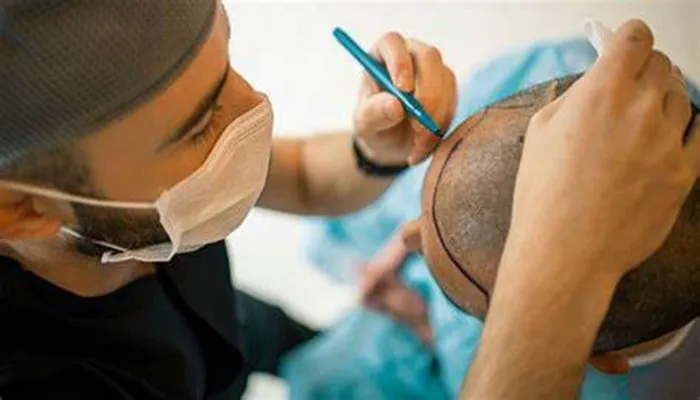Hair loss can significantly impact an individual’s self-esteem and quality of life. For those seeking a solution, Direct Hair Implantation (DHI) has emerged as a highly effective and minimally invasive option. As a hair transplant specialist, I often explain to patients how DHI works and why it is considered a leading technique in hair restoration. In this article, I will provide a detailed explanation of the DHI process, from preparation to post-treatment care.
Understanding Direct Hair Implantation
Direct Hair Implantation (DHI) is a modern hair transplant technique that involves the direct implantation of hair follicles into the scalp using a specialized tool called the Choi Pen. Unlike traditional hair transplant methods, DHI allows for precise control over the placement of each follicle, resulting in a more natural appearance and reduced scarring. This technique is particularly effective for treating androgenetic alopecia (male and female pattern baldness) and other forms of hair loss.
The DHI Process
Step 1: Initial Consultation and Assessment
Before the procedure, a thorough consultation is essential. During this meeting, the hair transplant specialist assesses the patient’s scalp condition, hair loss pattern, and overall health. The surgeon will also discuss the patient’s expectations and desired outcomes. This assessment helps determine if DHI is the right choice and outlines the treatment plan.
Step 2: Donor Hair Harvesting
The first step in the DHI procedure is harvesting hair follicles from the donor area, typically the back of the scalp. Using a specialized extraction tool, the surgeon carefully removes individual follicular units. This process is done with minimal discomfort and leaves tiny, barely noticeable scars.
Step 3: Preparing the Choi Pen
The Choi Pen is a key component of the DHI technique. It is a precision tool designed to hold and implant hair follicles directly into the scalp. The pen is loaded with the harvested follicles, ensuring they are ready for implantation. The Choi Pen allows for precise control over the angle, direction, and depth of each follicle, which is crucial for achieving natural-looking results.
Step 4: Implantation
With the Choi Pen loaded, the surgeon begins the implantation process. The pen is used to create tiny punctures in the recipient area (the area where hair is to be restored). Each follicle is then carefully inserted into these punctures. The Choi Pen’s design ensures that the follicles are placed at the optimal angle and depth, mimicking the natural growth pattern of hair.
Step 5: Post-Procedure Care
After the implantation is complete, the patient is given detailed aftercare instructions. Proper post-operative care is essential for ensuring a smooth recovery and optimal results. Patients are advised to do.
- Avoid strenuous activities and direct sunlight for a specified period.
- Follow a prescribed regimen of medications to reduce swelling and prevent infection.
- Keep the scalp clean and follow specific instructions for washing and caring for the treated area.
Post – Procedure Care
Once the DHI procedure is completed, proper post – procedure care is essential for the success of the treatment. The patient is provided with detailed instructions on how to care for the scalp. This includes keeping the scalp clean using a mild, recommended shampoo, avoiding excessive physical activity that could cause sweating and potentially affect the healing process, and protecting the scalp from direct sunlight. The patient may also be prescribed medications, such as antibiotics to prevent infection and anti – inflammatory drugs to reduce swelling and discomfort. Regular follow – up appointments are scheduled so that the specialist can monitor the healing progress, check for any signs of complications, and assess the growth of the transplanted hair.
Advantages of DHI
- Precision: The Choi Pen allows for highly precise placement of hair follicles, resulting in a natural appearance.
- Minimally Invasive: DHI causes minimal trauma to the scalp, reducing the risk of complications and scarring.
- Faster Recovery: Patients typically experience a quicker recovery compared to traditional hair transplant methods.
- Versatility: DHI is suitable for a wide range of hair types and can be used to address various forms of hair loss.
Potential Side Effects
While DHI is generally safe, there are potential side effects that patients should be aware of.
Temporary Hair Loss (Shock Loss): Some existing hair around the transplant site may fall out temporarily due to surgical stress. This usually resolves within a few months.
Swelling and Bruising: Mild swelling and bruising around the scalp and forehead are common but typically subside within a week.
Itching and Crusting: The scalp may become itchy and develop crusts as it heals. Patients are advised to avoid scratching to prevent infection.
Conclusion
Direct Hair Implantation (DHI) is a highly effective and advanced technique for hair restoration. By using the Choi Pen, surgeons can achieve precise and natural-looking results with minimal invasiveness. Understanding the DHI process, from donor hair harvesting to post-procedure care, can help patients make informed decisions about their hair restoration journey. If you are considering DHI, it is essential to consult with a qualified hair transplant specialist who can assess your needs and provide personalized recommendations.
Related topics:
DHI Method: All You Need to Know
Cosmedica DHI: Procedure, Benefits & Cost


